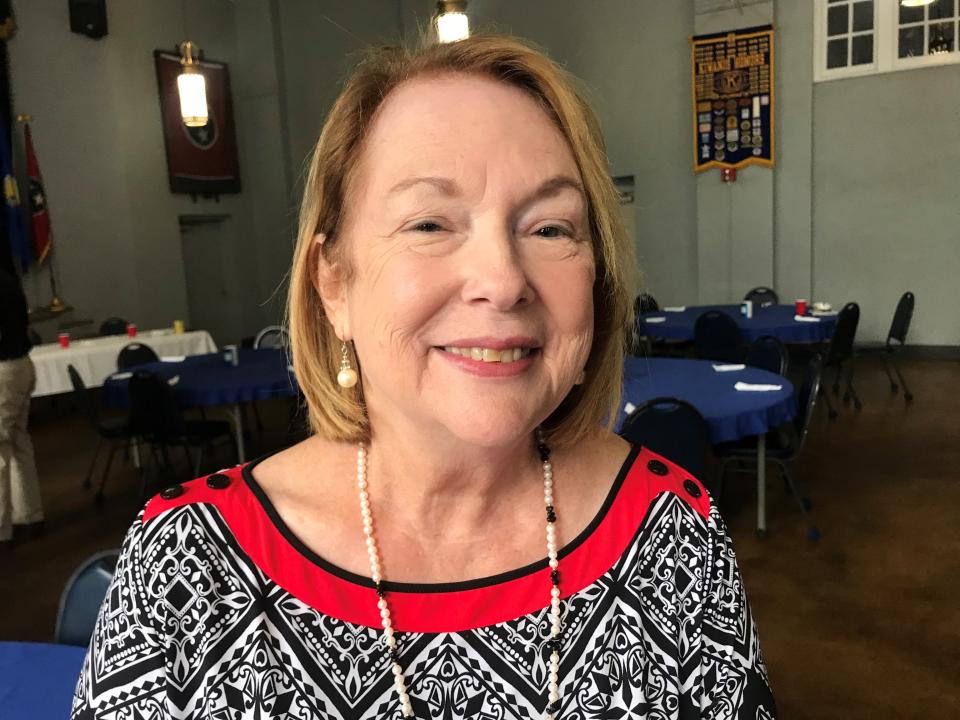Sheila Hickman: The harrowing journey that led to the First Thanksgiving
In July 1620, the Mayflower set sail from England to bring the Pilgrims to the New World. Her sister ship, the Speedwell leaked and had to turn back. After attempts to repair the ship failed, the Mayflower went on without her. The official date for sailing was September 6, 1620.
For 66 days the little merchant ship braved the mighty Atlantic with its challenges. Often there were storms and high waves, and the ship was tossed about. The 20 to 30 crew members slept in the front of the ship and suffered the most from sea sickness. The quarters for the Pilgrims were the lower decks, which had no windows and were damp and cold. The unhealthful conditions, the lack of sanitation and proper diet would be fatal for many especially the women and children.
The first person to die was described as a profane young seaman who had laughed at others who were sick. The Pilgrims saw his death as God’s judgment upon him. William Butten, an indentured servant, also died when they had almost reached land.
During a very bad storm one of the ship’s massive beams was damaged. One of the passengers had brought a great iron screw which was just what was needed to repair the beam. Again the Pilgrims believed that God was watching over them and carrying for their needs.
A young man, John Howland, was swept overboard. He grabbed a rope and was pulled to safety. He went on to become a valuable member of their community. Once more the Pilgrims thanked God taking care of one of their number.
Oceanus Hopkins was the only child born during the voyage. His mother Elizabeth and his father Stephen named the Latin word for ocean. Oceanus survived the first winter at Plymouth but died in 1627. His father was the only passenger with New World experience. He had worked for a company which sent him to Jamestown. On the crossing of the Atlantic he was shipwrecked in Bermuda. He arrived in Jamestown in 1610 and returned to England in 1614. Historians believe that Shakespeare’s Tempest is based on Stephen’s story.
On Nov. 11, 1620, the weary Pilgrims and crew reached Cape Cod. William Bradford’s’ Of Plymouth Plantation records: “Being thus arrived in a good harbor and brought safe to land, they fell upon their knees and blessed the God of Heaven.”
They had planned to land in Virginia and tried going down the coast. The rough seas made them return to Cape Cod. The passengers’ agreement with the Virginia Company no longer seemed binding. The leaders drew up the Mayflower Compact, and forty-one adult males signed to establish an orderly colony.
In the midst of a New England winter, building homes required hard work and stamina. In the morning, the Pilgrims rowed ashore to work on their houses, and at night they returned to the Mayflower.
By December about half of the passengers had died. In March 1621 houses were completed, and the Pilgrims could settle there permanently. Since the passengers now had homes, the Mayflower captained by Christopher Jones returned to England.
The Pilgrims had the good fortune to meet Squanto who had been kidnapped and taken to England. He spoke English and was invaluable to the settlers. They considered Squanto to be a special instrument of God sent to help them. He taught them how to plant corn and how to fish. He became a member of the colony and stayed with them the rest of his life.
In October 1621 the Pilgrims celebrated their first harvest in the New World with a three day feast. Fifty-three people were survivors of the Mayflower, and ninety Wampanoag Native Americans joined them. The meal was prepared by the few women who had survived. Earlier in the week the governor had sent four men to gather the wildfowl. These men brought a bounty including turkeys, ducks, and geese. Corn was used for bread or porridge. Five deer were provided by the Indians. The coastal location gave access to eels and lobster, clams, and mussels. There was probably not enough beer for so many people, so they drank water.
Since three days required so much food, the meats were probably made into stews. The Pilgrims’ gardens also had turnips, carrots, onions, garlic, and pumpkins. There would have been no pastries since they had no butter nor flour, but berries and nuts were part of the feast.
Thanksgiving celebrations are a part of our inheritance from those brave Pilgrims who thought coming to the New World was worth the struggles. Today 35 million people can trace their ancestry back to the 50 Pilgrims who survived and established the colony.
Sources: Personal lecture notes from teaching American Literature and the movie Plymouth Adventure with Spencer Tracy

This article originally appeared on The Daily Herald: Sheila Hickman: The harrowing journey that led to the First Thanksgiving
